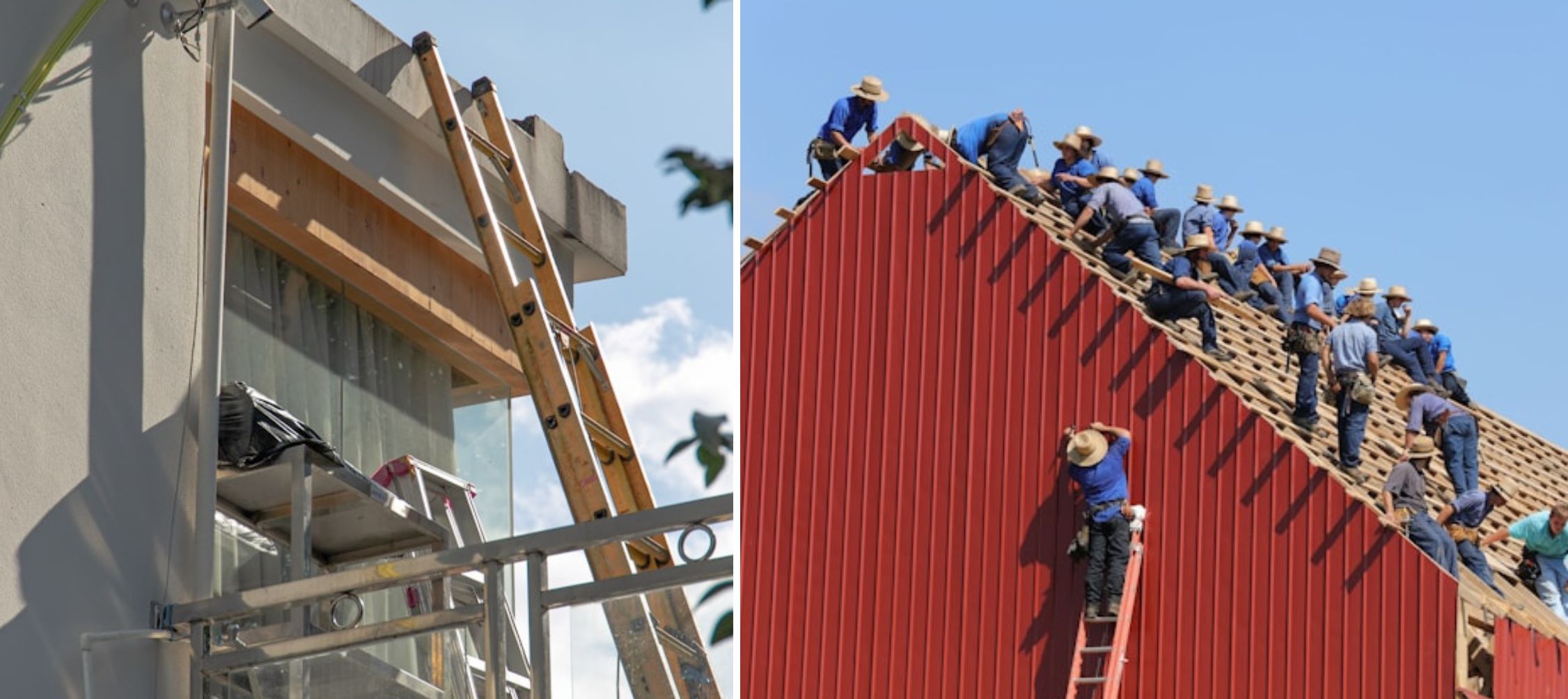Roofing may not be the most glamorous aspect of homeownership, but it is certainly one of the most important. A sturdy and well-maintained roof protects your home from weather elements and ensures your and your family’s safety. However, when it comes to roofing installation or repairs, many homeowners focus solely on finding a reputable contractor and getting the job done as quickly as possible.
While these are essential factors, they should not overshadow another crucial aspect: safety measures during installation. In this guide, we will discuss why roofing safety is vital for both yourself and your property and provide some practical tips to ensure a smooth and safe process for all involved.
The Importance of Roofing Safety & How to Obtain It
Roofing is a physically demanding task that involves working at heights, handling heavy materials, and using specialized equipment. As such, it poses significant risks to workers and anyone near the construction site. Accidents on roofing projects are not uncommon, and they can result in severe injuries or even fatalities. Moreover, any damage to your property during installation can prove costly and time-consuming.
To prevent such risks, it is crucial to prioritize safety measures throughout every stage of the roofing project. Let’s look at safety measures to consider before, during, and after the installation process.
Pre-Installation Safety Measures
Before starting any roofing project, it is essential to conduct a thorough inspection of your property, identify potential hazards, and take necessary precautions. This includes:
- Clearing the work area: Remove any obstacles that impede movement or pose a tripping hazard.
- Checking weather conditions: Working on a roof during inclement weather is unsafe, so be sure to schedule the project accordingly.
- Gathering safety gear: Ensure all workers have appropriate personal protective equipment (PPE) such as helmets, gloves, and harnesses.
- Setting up ladders and scaffolding: Use sturdy and properly secured ladders or scaffolding to access the roof.

Installation Safety Measures
Once work begins, it is crucial to maintain safety protocols to prevent accidents and injuries. This includes:
- Proper handling of materials: Lift and move roofing materials carefully to avoid strain or injury.
- Communicating effectively: Ensure all workers know their roles and responsibilities and have a clear line of communication with each other.
- Using fall protection: Falls are the most common cause of roofing accidents, so it is essential to have proper fall protection measures in place, such as safety harnesses and guardrails.
Post-Installation Safety Measures
Even after the roofing installation process is complete, safety should remain a top priority. Here are some steps to follow:
- Clean up properly: Remove all debris and materials from the work area to prevent potential hazards.
- Inspect the roof: Conduct a thorough inspection of the completed project to ensure everything is secure and in good condition.
- Schedule regular maintenance: Regularly inspect and maintain your roof to catch any potential issues before they become major problems.
Choosing the Best Roofing Contractor
Selecting the right roofing contractor can make all the difference in the success and safety of your roofing project. It’s vital to choose a professional who has the credentials and experience and places a high value on safety practices.
A trustworthy contractor will ensure that the job is done efficiently, effectively, and without compromising the safety of anyone involved. Below are tips to guide you through choosing the best roofing contractor for your needs.

Confirm Their Credentials
Verify that the contractor has all required business licenses and is bonded and insured. Request to see copies of their certifications to ensure they are up-to-date and relevant to your project’s demands.
Check for Experience and Reputation
Look for a contractor who has a solid track record of quality roofing installations and can provide references from previous projects. Don’t hesitate to reach out to these references to inquire about their experience with the contractor.
Evaluate their Safety Record
Ask about the contractor’s safety program and training procedures. A respectable contractor should have a low incidence of accidents and a clear safety plan that adheres to Occupational Safety and Health Administration (OSHA) standards.
Understand their Warranty Offer
Ensure you know what kind of warranty the contractor offers on both materials and labor. A reliable roofing professional will stand behind the quality of their work with a substantial warranty.
Assess their Communication Skills
Good communication is key to any successful construction project. Make certain the contractor is responsive to your questions and is willing to provide regular updates throughout the roofing process.
Obtain Detailed Quotes
Before making your final decision, obtain detailed quotes from multiple contractors. These should clearly outline the scope of work, the types of materials to be used, timelines, payment milestones, and any additional services offered. Comparing quotes can help you better understand the market rates and spot any red flags regarding overly low or high estimates.
Consider Their Availability
Timely completion of your project is important. Check the contractor’s availability to start and complete the job within your desired timeframe. Be wary of those who can start immediately, as it could indicate a lack of other work due to poor quality or reputation.
Check for Proper Ventilation Plans
A good roofing system is not just about the external surface; proper ventilation is key to avoid moisture buildup and ensure the roof’s longevity. Ensure the contractor is knowledgeable about ventilation and includes this in their planning.
Inquire About Waste Disposal
Roofing projects produce a significant amount of waste. Professional contractors should have a plan in place to dispose of old materials and post-job cleanup. Confirm whether this service is included in the overall cost or requires an additional fee.
Discuss Payment Policies
Clearly understand the payment terms before work commences. Reputable contractors will not ask for full payment upfront. Set up a payment schedule that aligns with key milestones in the project and avoid contractors who demand cash payments without proper receipts.

In Summary
Roofing projects may seem daunting, but they can be completed efficiently and safely with the right safety measures and a reputable contractor. Prioritize safety at all stages of the process – before, during, and after installation – and carefully select a trustworthy roofing professional for your project. Remember to also check local building codes and regulations before starting any roofing project, as they may have specific requirements for safety measures and contractor certifications. Additionally, remember that regular maintenance is crucial for the long-term health of your roof and should not be overlooked.









